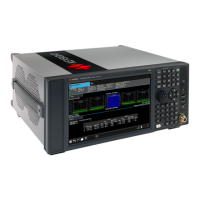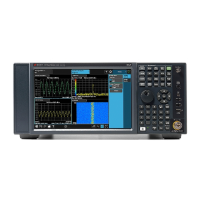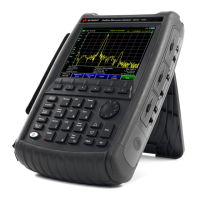Functions and Measurements
Reflection Measurement
72
the RF OUT connector of the analyzer. Press ENTER to start
the open calibration.
2 Follow the instruction to connect the short component of
the T- combo calibrator to the RF OUT connector of the
tester. Press ENTER to start the short calibration.
3 Connect the Load component of the T- combo calibrator to
the RF OUT connector.
Press ENTER to start the load calibration.
A Calibrated indicator is shown on the upper left corner of
the screen when the calibration is completed. Then, the
analyzer is ready for your further cable measurement.
Measuring Cable Reflection
Press Mode > Reflection Measurement > Reflection Measurement to
select the Reflection Measurement Mode. It allows you to set
the Y axis of the graticule as return loss, VSWR or reflection
coefficient value.
Measuring Distance to Fault
For this measurement, an internally generated signal emits
from the RF OUT port of the tester and is transmitted to the
cable and antenna system (DUT). The tester receives and
processes the signal power reflected from faults and
imperfections. In performing a DTF measurement, the tester
uses frequency domain reflectometry. The transmitted and
reflected signals contain information about the distance to
the faults. This information is used to determine the
physical distance to the faults. The tester displays the
physical distance to the probable faults, corrected for cable
loss and the velocity propagation factor of the cable.

